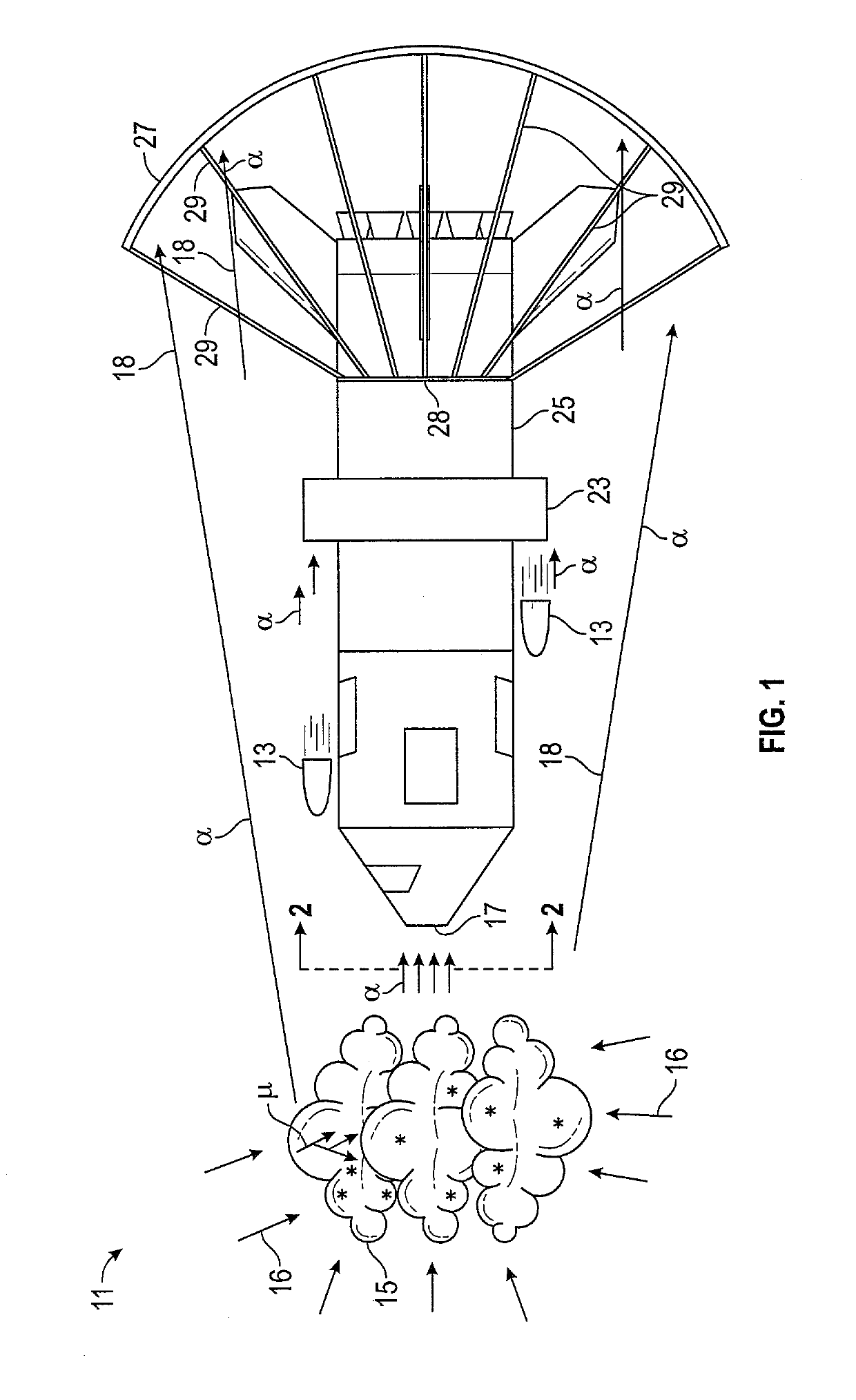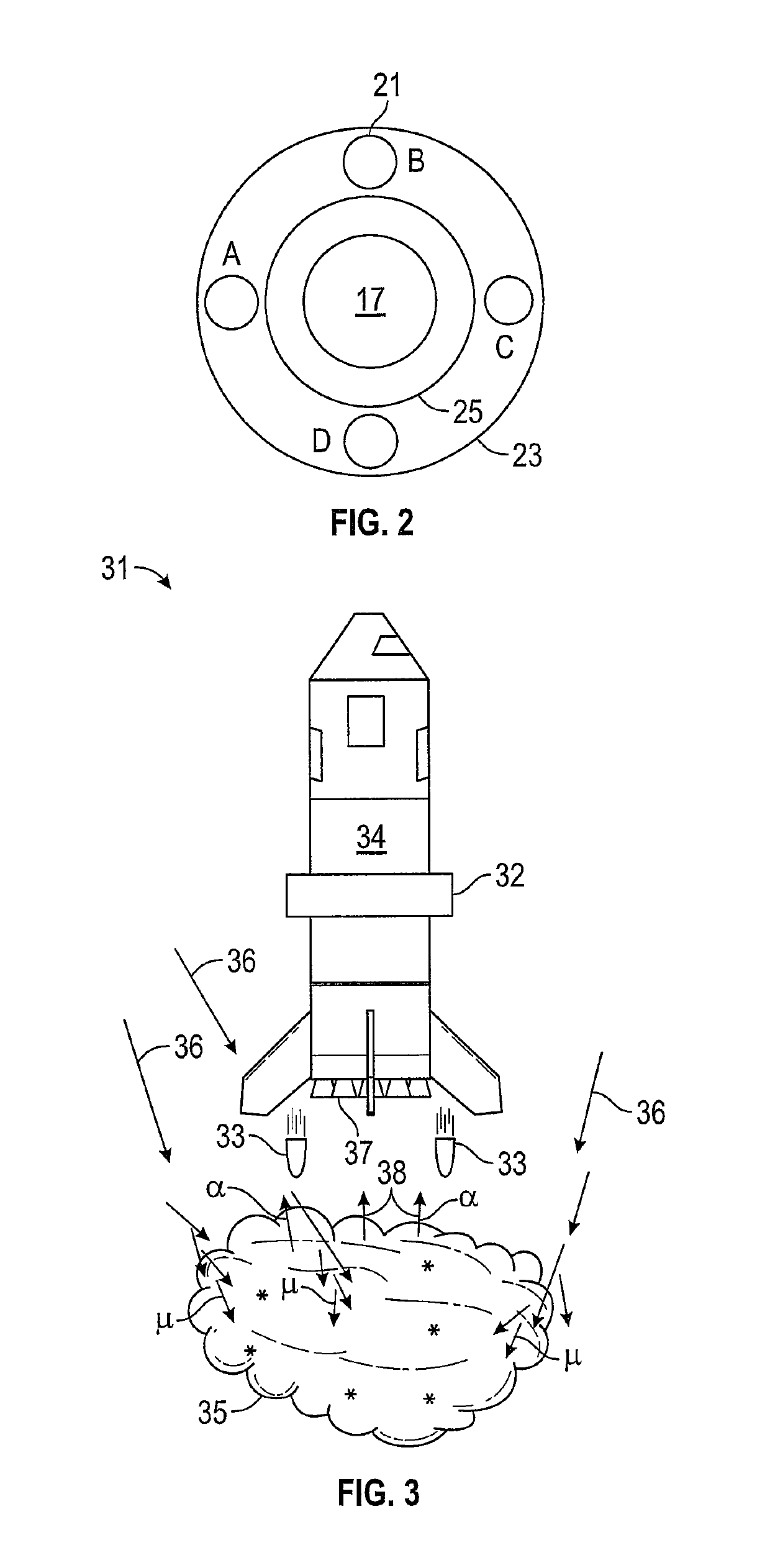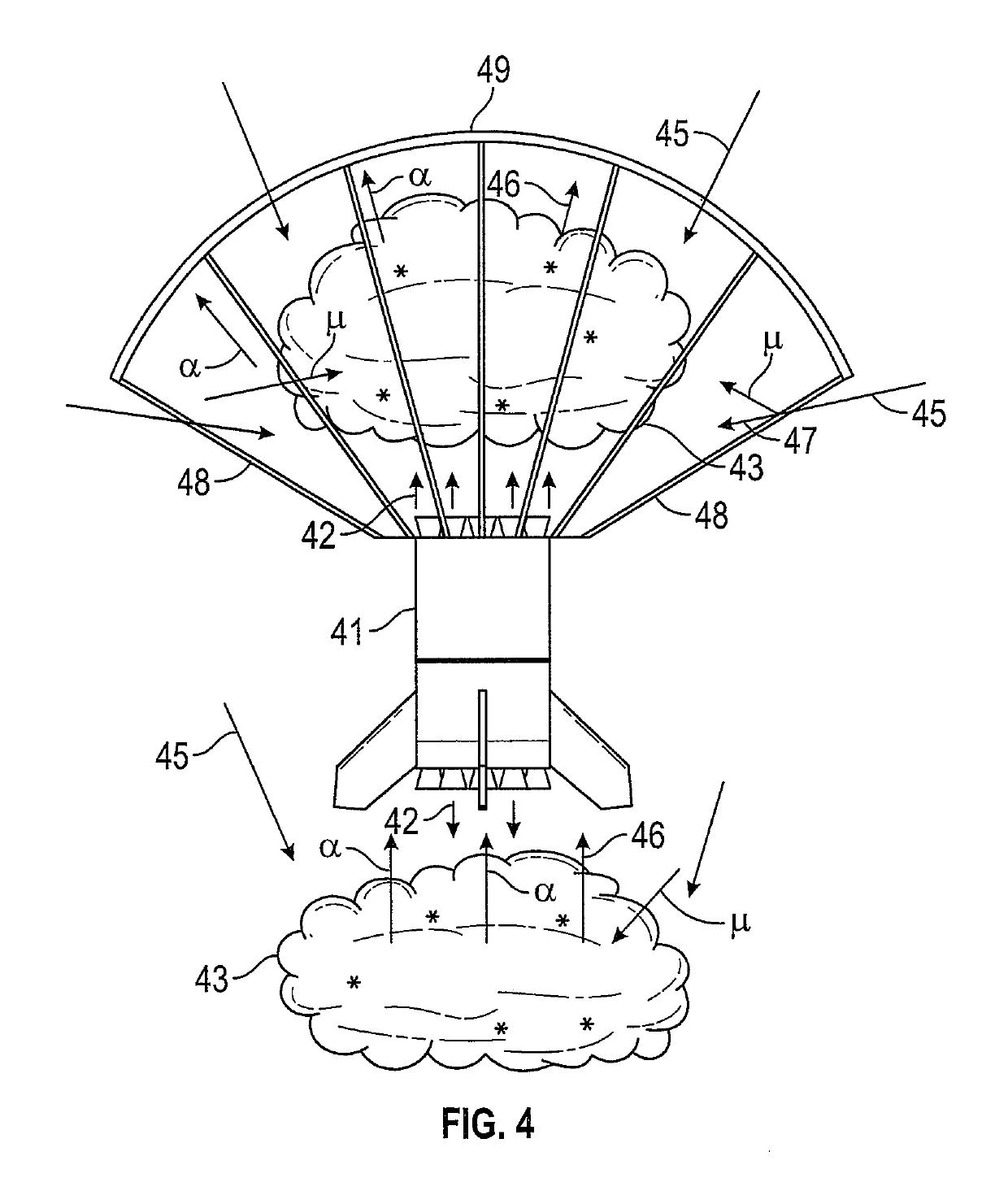Spacecraft landing and site-to-site transport for a planet, moon or other space body
a spacecraft and landing technology, applied in the field of spacecraft landing and site-to-site transport for planets, moons or other space bodies, can solve the problems of difficult landing of a large mass on mars, delay in communication time of about 20 minutes, and total loss of equipment, so as to facilitate a soft landing
- Summary
- Abstract
- Description
- Claims
- Application Information
AI Technical Summary
Benefits of technology
Problems solved by technology
Method used
Image
Examples
Embodiment Construction
[0031]With reference to FIG. 1, a decelerating or braking technique for a spacecraft 11 on approach to a planet, moon or other space body is seen. A series of projectiles 13 containing micro-fusion target material (chips, pellets, powder), e.g. once every minute or more frequently, are shot externally ahead of the craft 11 (i.e. in the flight path) by the spacecraft. The craft's own landing system may employ radar determination of the craft trajectory in relation to a selected landing area of the space body to direct the projectiles 13 to specified locations ahead of the craft that will produce a desired braking thrust vector. Alternatively, one or more landing areas on surface of the space body may have an automated landing system pre-positioned on that body (i.e. separate from the landing craft) with the necessary fuel projectiles that can then be shot just ahead of the craft based on radar determinations by that landing system. This would eliminate the need for the landing craft ...
PUM
 Login to View More
Login to View More Abstract
Description
Claims
Application Information
 Login to View More
Login to View More - R&D
- Intellectual Property
- Life Sciences
- Materials
- Tech Scout
- Unparalleled Data Quality
- Higher Quality Content
- 60% Fewer Hallucinations
Browse by: Latest US Patents, China's latest patents, Technical Efficacy Thesaurus, Application Domain, Technology Topic, Popular Technical Reports.
© 2025 PatSnap. All rights reserved.Legal|Privacy policy|Modern Slavery Act Transparency Statement|Sitemap|About US| Contact US: help@patsnap.com



